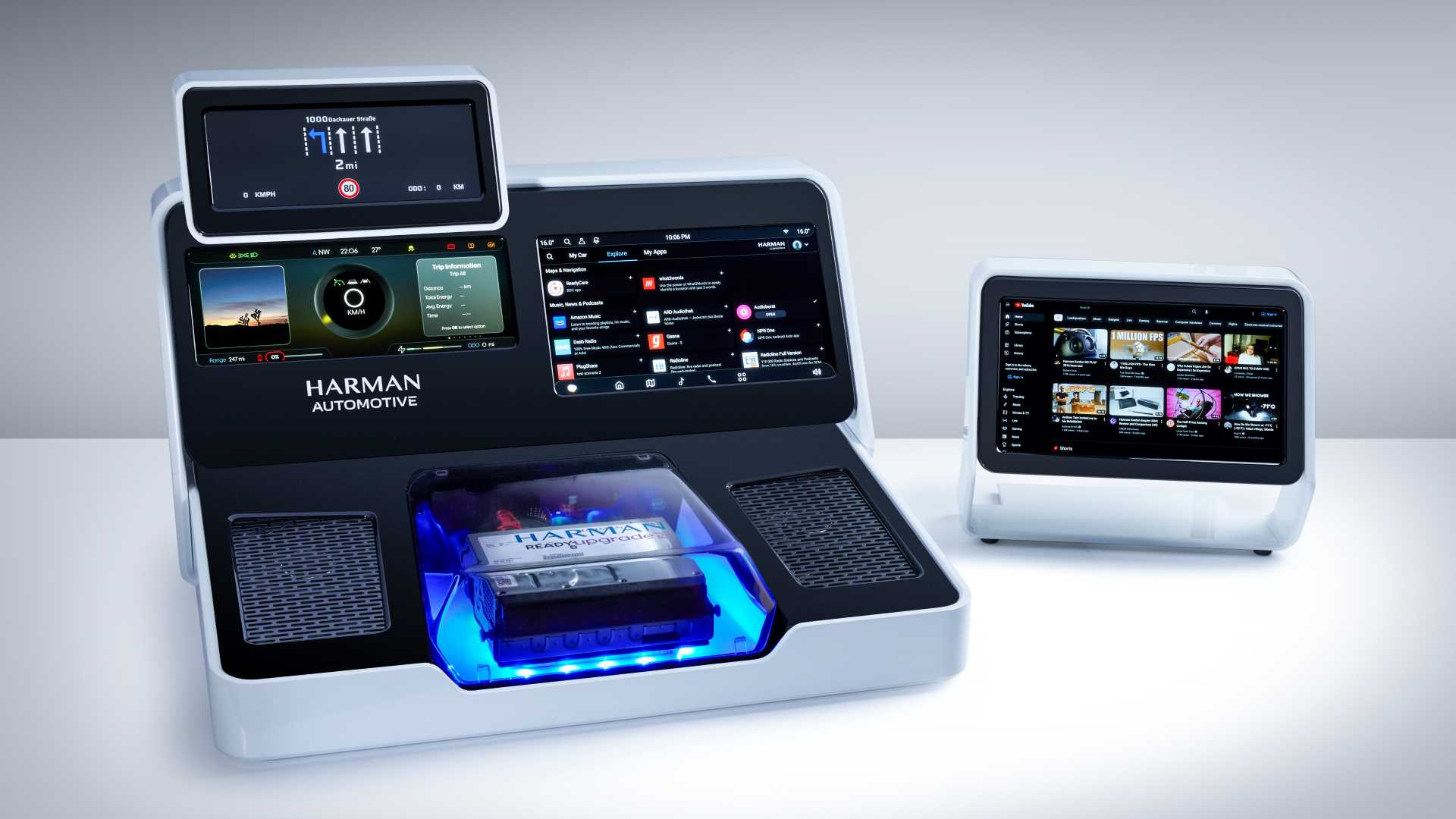

When the infotainment system revolution hit cars it changed everything. A car from a decade ago is instantly recognizable by its garish low-resolution screens and terrible navigation system. Harman wants to change all that with hot-swappable hardware.
As reported by MotorTrend, the Samsung subsidiary has been working on a modular upgradable architecture for electronics in cars called Ready Upgrade. It’s based around a “domain controller” which contains the hardware to run the infotainment screen, instrument panel, heads-up display, and other relevant features. This modular device hooks up via a standardized quick-disconnect 96-pin connector which includes multiple Ethernet links as well as spare pins for future expansion. It’s intended to offer better upgradability for cars beyond what simple software updates can achieve.
By baking the key hardware into a single hot-swappable module, it would make upgrading a simple matter. Previously, the aftermarket has offered clumsy hacks to add technologies like Bluetooth, WiFi, or CarPlay to older cars that don’t have the hardware. Instead, with the Ready Upgrade architecture, as new hardware and technologies hit the market, they could be baked into the new revision domain controller which would drop right into existing cars. It would also allow for speed upgrades which would enable the use of more demanding apps which could overwhelm older hardware.

We’ve seen some automakers tackle this problem themselves. Porsche is at the head of the pack in this regard, routinely releasing updated infotainment systems for past models. Harman’s approach aims to make this easier across the industry though, particularly for companies with a wider model range.
If adopted, the technology could become a game-changer for automakers. No longer would cars become less desirable after five years simply because of an outdated infotainment setup. Instead, the automaker could simply buy the latest hot-swappable module from Harman to update the model without having to go through an expensive in-house development process. The intention is to develop a new-generation controller every 18 months, which would keep both new vehicles on sale and retrofitted cars on the cutting edge.
There are some hurdles that this system can’t easily overcome. While the domain controller is hot-swappable, regularly swapping out elements like cluster and infotainment screens would be less practical. The hardware would be able to offer new connectivity options and better performance, but would still have to work with the limitations of its supporting equipment. It would thus be wise for automakers to fit high-quality gear from day one to future-proof their models going forward.
Ferrari is already onboard, but the value of the system will lie in whether or not more automakers are keen to jump on the bandwagon. Currently, many automakers see their infotainment systems as a point of differentiation from the competition. The fast pace of development in this area is also a great incentive for the well-heeled to regularly upgrade their vehicles. If an owner could instead get a similar experience by swapping out a single module instead of buying a whole new car, that might be seen as undesirable to automakers.
Regardless, many enthusiasts miss the days when upgrading a car stereo was a simple swap-in, swap-out affair. Harman clearly appreciates that, and has a vision to bring back that reality for consumers. Whether it catches on will be down to the industry.
Got a tip? Let the author know: lewin@thedrive.com